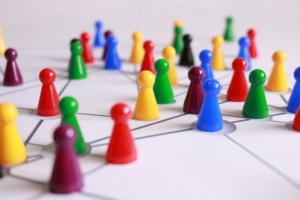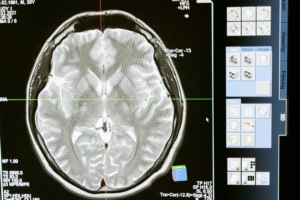Five Steps to Go from Hyperfocus to Flow
 As we explored the ADHD symptom of hyperfocus in one of our recent coaching sessions, Angel lamented that for her hyperfocus on a task doesn’t consistently result in productivity. She often experiences hyperfocus without the effect of moving forward. She says “It feels like I’m getting stuck just looking and thinking but not doing. I’m there. I’m giving it all my attention. But I’m not doing anything meaningful to accomplish something I want to get done.”
As we explored the ADHD symptom of hyperfocus in one of our recent coaching sessions, Angel lamented that for her hyperfocus on a task doesn’t consistently result in productivity. She often experiences hyperfocus without the effect of moving forward. She says “It feels like I’m getting stuck just looking and thinking but not doing. I’m there. I’m giving it all my attention. But I’m not doing anything meaningful to accomplish something I want to get done.” 
Hyperfocus involves intense concentration on a specific task to the exclusion of everything else. Unfortunately, intense attention isn’t always enough to generate productive action. The focus itself is so intense that it excludes input and flexible thinking that will move us forward.
What’s missing in the experience of hyperfocus? We’re missing the element of being energized by what we’re working on. We might be hyper focused on something that feels so overwhelming it shuts down action or on something that feels so simple it fails to get us moving.
 What we need to find is the state of being that psychologist Mihály Csíkszentmihályind calls “flow.” Flow is a state of optimal experience where individuals are fully immersed and energized in an activity, often losing track of time. While hyperfocus is more spontaneous and can be challenging to control, flow is typically achieved through a balance of challenge and skill.
What we need to find is the state of being that psychologist Mihály Csíkszentmihályind calls “flow.” Flow is a state of optimal experience where individuals are fully immersed and energized in an activity, often losing track of time. While hyperfocus is more spontaneous and can be challenging to control, flow is typically achieved through a balance of challenge and skill.
Five Steps to Move from Hyperfocus to Flow
- Set Clear Goals
Clearly define the goals of the task during hyperfocus to provide a sense of direction. In this step, you are planning and defining your outcomes. Doing this will aid you in both being productive and identifying the evidence for your productivity. Setting goals in advance will also give you a guide to know when you have completed your work.
- Seek Immediate Feedback
Ensure you receive feedback about your progress in real-time to adjust and refine your efforts. This could be achieved by recruiting an accountability partner or a body double who can share observations with you. It can also be achieved by referring to your goals to assess how your realtime efforts are contributing to your defined outcomes.
- Create Balanced Challenge
Modify the task to match your skill level. Adjust difficulty to keep it challenging but not overwhelming. The key here is to be like Goldilocks: not too much, not too little, just right. When creating balanced challenge for yourself, watch out for the pitfalls of trying to live up to “shoulds” and trying to do it like you believe everyone around you is doing it. Be true to who you are and where your skills lie when creating that balanced challenge.
- Eliminate Distractions
Create an environment that minimizes external interruptions to maintain focus. This can be things like hanging a DO NOT DISTURB sign on your office door and closing it, putting your phone somewhere out of reach, or tidying your workspace before starting. Another good idea is to gather all of your needed materials and supplies in advance to avoid breaking your concentration and opening yourself to distractions as you go in search of things.
- Ensure Task Engagement
Stay fully engaged in the task by ensuring it aligns with your interests and passions. The greater your interest in a task, the easier it is to enter a flow state. Again, this comes down to knowing and accepting yourself and how you operate best, regardless of “shoulds” or how you think you compare to others.

Take the challenge. Try using these steps to channel hyperfocus into a more structured and enjoyable flow experience.


 ems that were useful and effective. Consider characteristics or patterns those gems have in common. How can you incorporate those into systems you create for yourself moving forward?
ems that were useful and effective. Consider characteristics or patterns those gems have in common. How can you incorporate those into systems you create for yourself moving forward? Keep it simple. This phrase seems so over used, yet it is so true. I have clients who spend hours, days even, creating complex systems with bells, whistles, and baubles of all sizes and colors to account for any and every possibility. Their systems are detailed, comprehensive, complex, and attractive but not practical. Their brains enjoy the creative process of putting them together but balk at actual implementation because the systems are too overwhelming and complicated to use. So, keep it simple.
Keep it simple. This phrase seems so over used, yet it is so true. I have clients who spend hours, days even, creating complex systems with bells, whistles, and baubles of all sizes and colors to account for any and every possibility. Their systems are detailed, comprehensive, complex, and attractive but not practical. Their brains enjoy the creative process of putting them together but balk at actual implementation because the systems are too overwhelming and complicated to use. So, keep it simple. Use a system that works with YOUR brain. This requires some self observation, analysis, and, above all, honesty. It also requires you to let go of the idea (hope) that someone other than you knows the perfect magic way of doing things that will make everything in your life fall into place.
Use a system that works with YOUR brain. This requires some self observation, analysis, and, above all, honesty. It also requires you to let go of the idea (hope) that someone other than you knows the perfect magic way of doing things that will make everything in your life fall into place. Get a thinking partner. It’s hard to ask yourself the hard questions and be objective about your responses when just doing it in your head. A coach is specially trained to collaborate with you to help you move forward. If setting up with a coach doesn’t feel like the right move for you, a trusted friend or family member may be able to fill the role. Who is a person in your life who can listen, ask good questions, and collaborate with you to process your wants, needs, patterns, skills, and so forth?
Get a thinking partner. It’s hard to ask yourself the hard questions and be objective about your responses when just doing it in your head. A coach is specially trained to collaborate with you to help you move forward. If setting up with a coach doesn’t feel like the right move for you, a trusted friend or family member may be able to fill the role. Who is a person in your life who can listen, ask good questions, and collaborate with you to process your wants, needs, patterns, skills, and so forth? Carla arrived at coaching so frustrated with herself. She had determined a routine for her day in the previous session, but reported that she had “failed” at sticking with it. When I asked what she thought was getting in her way, she said, “It wasn’t a good plan. It doesn’t work. I just want a system that works.”
Carla arrived at coaching so frustrated with herself. She had determined a routine for her day in the previous session, but reported that she had “failed” at sticking with it. When I asked what she thought was getting in her way, she said, “It wasn’t a good plan. It doesn’t work. I just want a system that works.”
 he ADHD brain wants its dopamine hit. It begins looking elsewhere for stimulation and comfort. This doesn’t mean the system has failed, was no good in the first place, or needs to be thrown out. IT ALSO DOESN’T MEAN THAT YOU HAVE FAILED. Before scrapping your system, pause and take the opportunity to get creative and re-sparkle-ize your system. Make it flashy again to get your brain back on board.
he ADHD brain wants its dopamine hit. It begins looking elsewhere for stimulation and comfort. This doesn’t mean the system has failed, was no good in the first place, or needs to be thrown out. IT ALSO DOESN’T MEAN THAT YOU HAVE FAILED. Before scrapping your system, pause and take the opportunity to get creative and re-sparkle-ize your system. Make it flashy again to get your brain back on board.
 e and our abilities have not only led us to this optimal performance, but they will also maintain us here, or we fear that making any movement will disrupt the balance of things and cast us into a pit of doom. Sometimes these two oppositional forces exist within us at the same time.
e and our abilities have not only led us to this optimal performance, but they will also maintain us here, or we fear that making any movement will disrupt the balance of things and cast us into a pit of doom. Sometimes these two oppositional forces exist within us at the same time.

 Stella, a high-achieving entrepreneur in the event planning sector, came to her recent coaching session wanting to figure out how to create “breathing room” between the completion of one major project and the launch of another so that she doesn’t repeat the pattern of cascading from one chaotic situation to the next. Her past pattern of remaining in a constant state of overwhelm leaves her feeling exhausted and drained and puts a strain on her important relationships. She recognizes that she is the source of the barriers to peace and, therefore, she has the power to remove them to make space for a different reality.
Stella, a high-achieving entrepreneur in the event planning sector, came to her recent coaching session wanting to figure out how to create “breathing room” between the completion of one major project and the launch of another so that she doesn’t repeat the pattern of cascading from one chaotic situation to the next. Her past pattern of remaining in a constant state of overwhelm leaves her feeling exhausted and drained and puts a strain on her important relationships. She recognizes that she is the source of the barriers to peace and, therefore, she has the power to remove them to make space for a different reality. Stella agreed that all three phases are critical for her to keep the chaos at bay, yet, in planning for the execution of the final stage, she set it up in a way that prevented her from following through. First, she explained that she doesn’t know how to have fun, so I asked, “What’s more important, for you to have fun or for your children and husband to create a shared memory with you in which they’re having fun?” Perspective-taking is a difficult task for the ADHD brain, so Stella paused to process through this consideration of “fun.”
Stella agreed that all three phases are critical for her to keep the chaos at bay, yet, in planning for the execution of the final stage, she set it up in a way that prevented her from following through. First, she explained that she doesn’t know how to have fun, so I asked, “What’s more important, for you to have fun or for your children and husband to create a shared memory with you in which they’re having fun?” Perspective-taking is a difficult task for the ADHD brain, so Stella paused to process through this consideration of “fun.”
 Human relationships are built on communication. Our communication skills give others information about who we are, what they can expect from us, and how responsive we are to them. Good communication draws people into us. Bad communication creates friction and distancing.
Human relationships are built on communication. Our communication skills give others information about who we are, what they can expect from us, and how responsive we are to them. Good communication draws people into us. Bad communication creates friction and distancing.
 My grandmother frequently admonished me throughout my early years by saying, “Curiosity killed the cat.” This reprimand usually coincided with actual or contemplated mischief, so I heard it a lot from my grandmother’s lips. She used the quip to keep me in line.
My grandmother frequently admonished me throughout my early years by saying, “Curiosity killed the cat.” This reprimand usually coincided with actual or contemplated mischief, so I heard it a lot from my grandmother’s lips. She used the quip to keep me in line. 
 elements, illness, starvation, or predator. Your brain truly believes that curiosity killed the cat and that curiosity will kill you, as well. Thus, it creates a feeling of fear in order to discourage curiosity and regain a sense of safety.
elements, illness, starvation, or predator. Your brain truly believes that curiosity killed the cat and that curiosity will kill you, as well. Thus, it creates a feeling of fear in order to discourage curiosity and regain a sense of safety.
